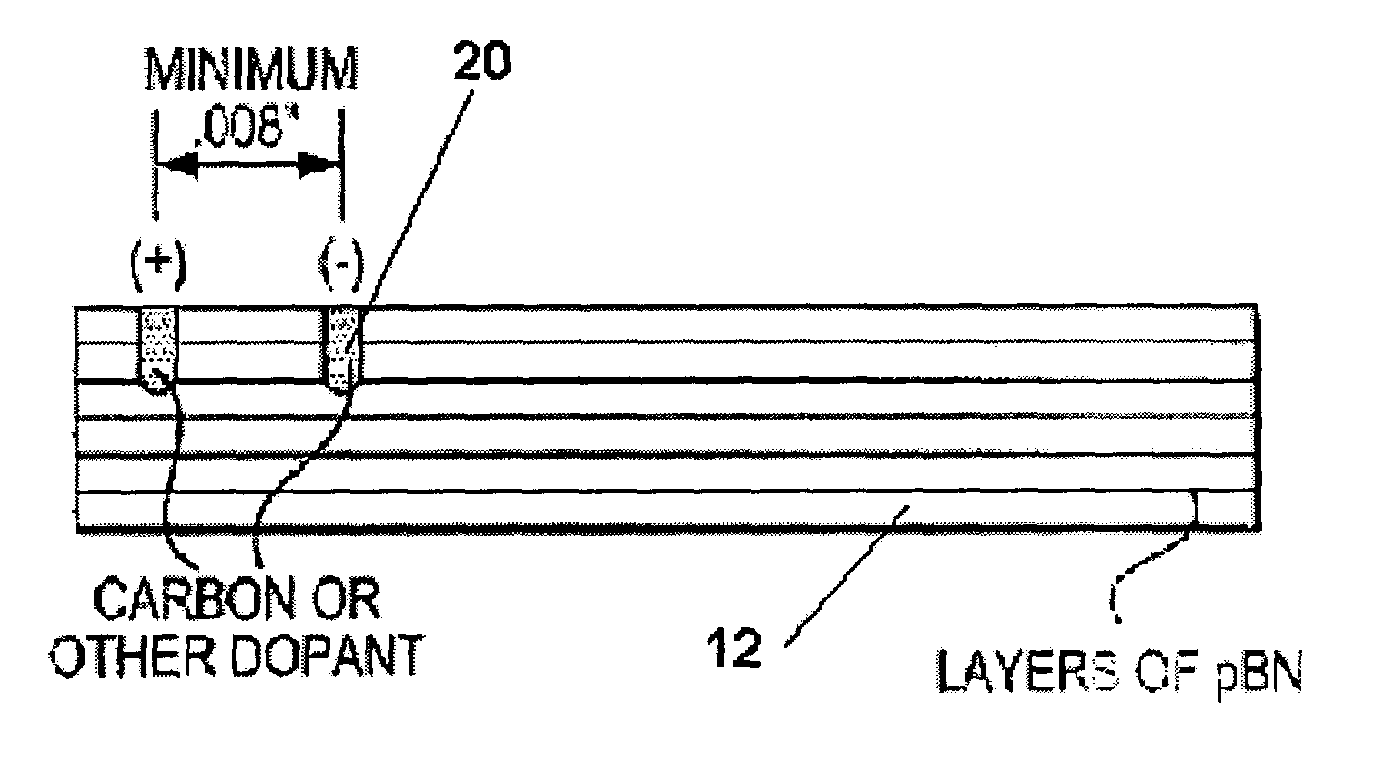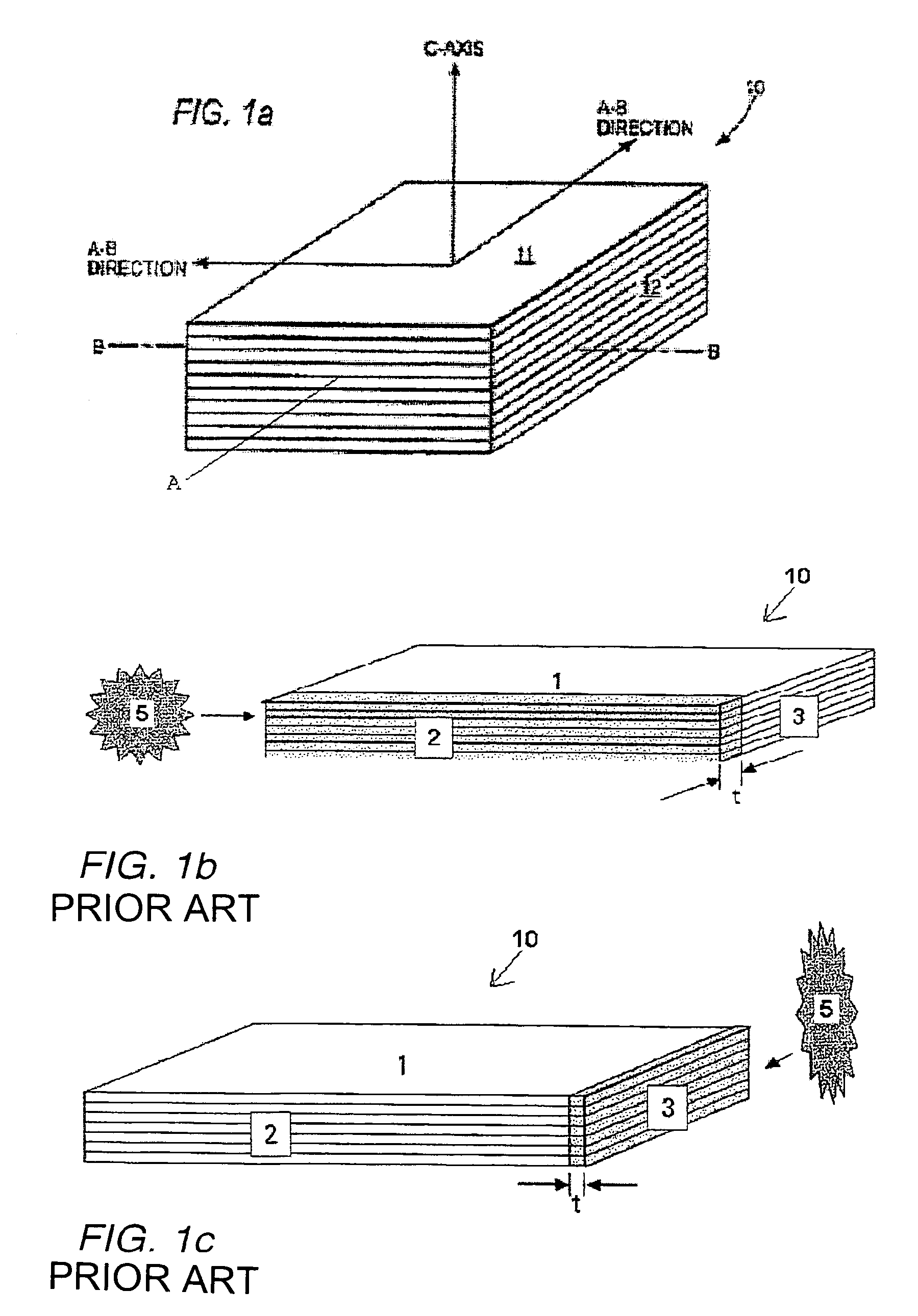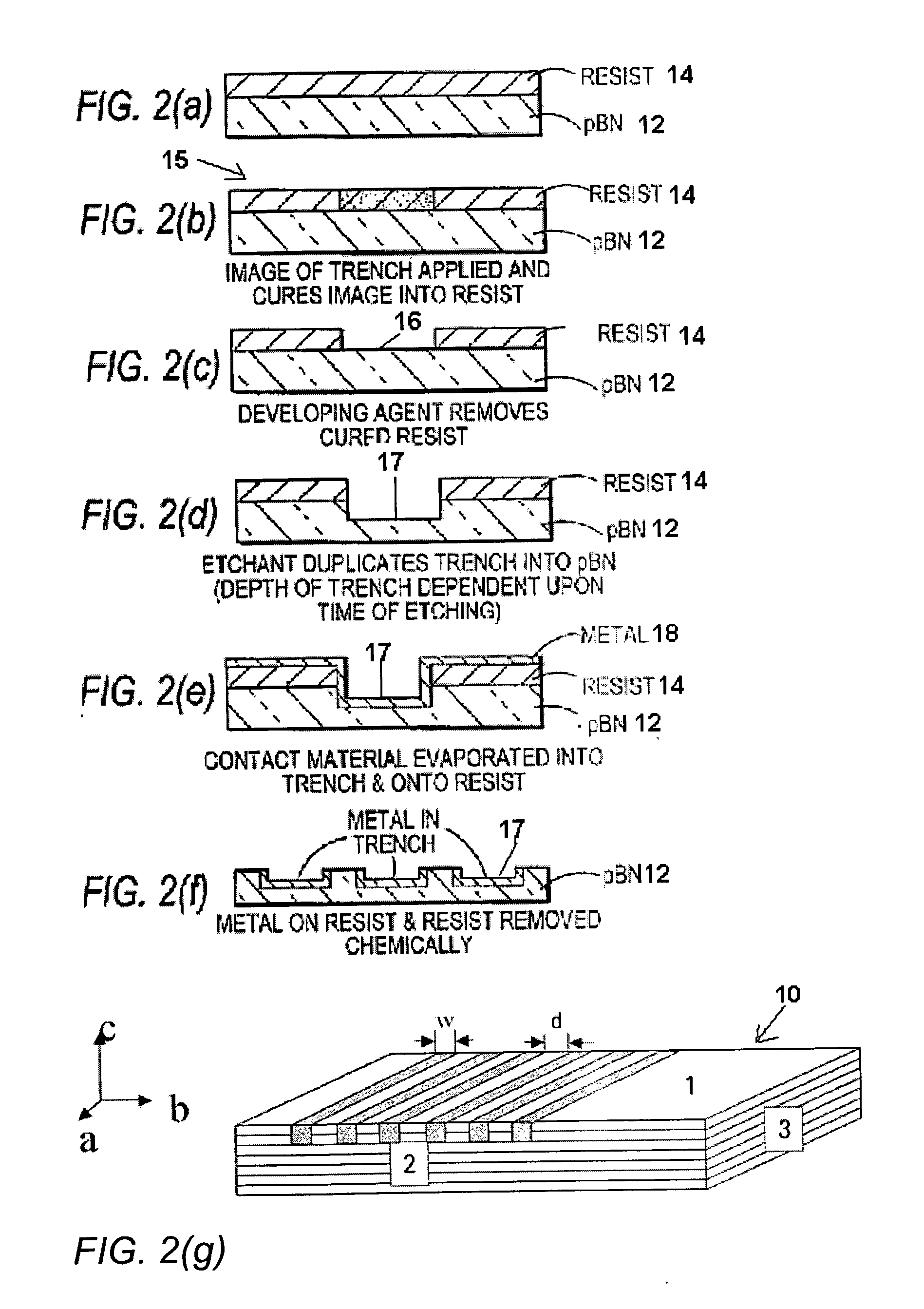Neutron detector employing doped pyrolytic boron nitride and method of making thereof
a boron nitride and neutron detector technology, applied in the field of neutron detectors, can solve the problems of inefficient use of scintillation detectors for detecting neutrons, difficult detection of neutron particles, limited utility, etc., and achieve the effect of raising the energy level
- Summary
- Abstract
- Description
- Claims
- Application Information
AI Technical Summary
Benefits of technology
Problems solved by technology
Method used
Image
Examples
example 1
[0048]In this first example, pyrolytic boron nitride layers are deposited on a graphite mandrel by passing BCl3, NH3 in a graphite vacuum furnace based CVD reactor. Reactant gases are introduced into a heated chamber (heated to a temperature in the range of 1600°–1900° C.) within a water-cooled steel vacuum chamber. The graphite mandrel is placed above a nozzle through which reactant gases flow into the heated chamber. Water-cooled coaxial injectors are used. Temperature is monitored by an optical pyrometer. Pressure is monitored by a vacuum transducer.
[0049]In the deposition process, CH4 is introduced along with BCl3 at feed rates adjusted for the carbon concentration in the pBN to be kept at about 3 wt. % or less (by adjusting the C / B ratio and O / C ratio in the feed gases, specifically the rates of CH4 relative to BCl3).
[0050]The electrical resistivity of the doped pBN composite is measured at about 2.1×108 ohm-cm.
example 2
[0051]In example 2, an additional feed stream of an oxygen precursor is introduced to adjust the oxygen concentration in the pBN. The BCl3 feed stream is maintained at about 0.5 slpm. The NH3 is maintained at about 1.5 slpm. The furnace temperature is about 1800° C. Vacuum pressure is maintained at about 0.5 mm Hg. At intervals of about every 15 minutes, a pulse of CO feed rate of about 0.5 slpm is introduced for about 5 seconds to sufficiently incorporate oxygen uniformly along the surface of the pBN material.
[0052]The deposition rate is at about 100–180 microns per hour. After the deposition, pBN layers may be obtained by peeling them off the pBN deposit. The ped strength between the pBN layers is measured using a double cantilever beam (DCB) test known in the art to measure peel strength between the surface layer interfaces. The peel strength is found to be about 1.5 N / mm or less.
example 3
[0053]Example 2 is repeated for to produce layers of doped pBN with engineered weaker interfaces at intervals of about every 100 microns. The layers are peeled of by attaching an adhesive tape (3M's Scotch Tape) and pulling the tape in a direction normal to the deposited layer, thus separating the layers.
[0054]In the next step, electrodes (silver filled epoxy) are applied to the planar surfaces of each layer. Once the electrodes are attached on either side, a high voltage gradient is generated by applying suitable level of D.C. field. The detector is then attached to a schematic incorporating electronic circuit as shown in FIG. 5 for detection of pulses generated by neutron-boron interaction.
PUM
 Login to View More
Login to View More Abstract
Description
Claims
Application Information
 Login to View More
Login to View More - R&D
- Intellectual Property
- Life Sciences
- Materials
- Tech Scout
- Unparalleled Data Quality
- Higher Quality Content
- 60% Fewer Hallucinations
Browse by: Latest US Patents, China's latest patents, Technical Efficacy Thesaurus, Application Domain, Technology Topic, Popular Technical Reports.
© 2025 PatSnap. All rights reserved.Legal|Privacy policy|Modern Slavery Act Transparency Statement|Sitemap|About US| Contact US: help@patsnap.com



